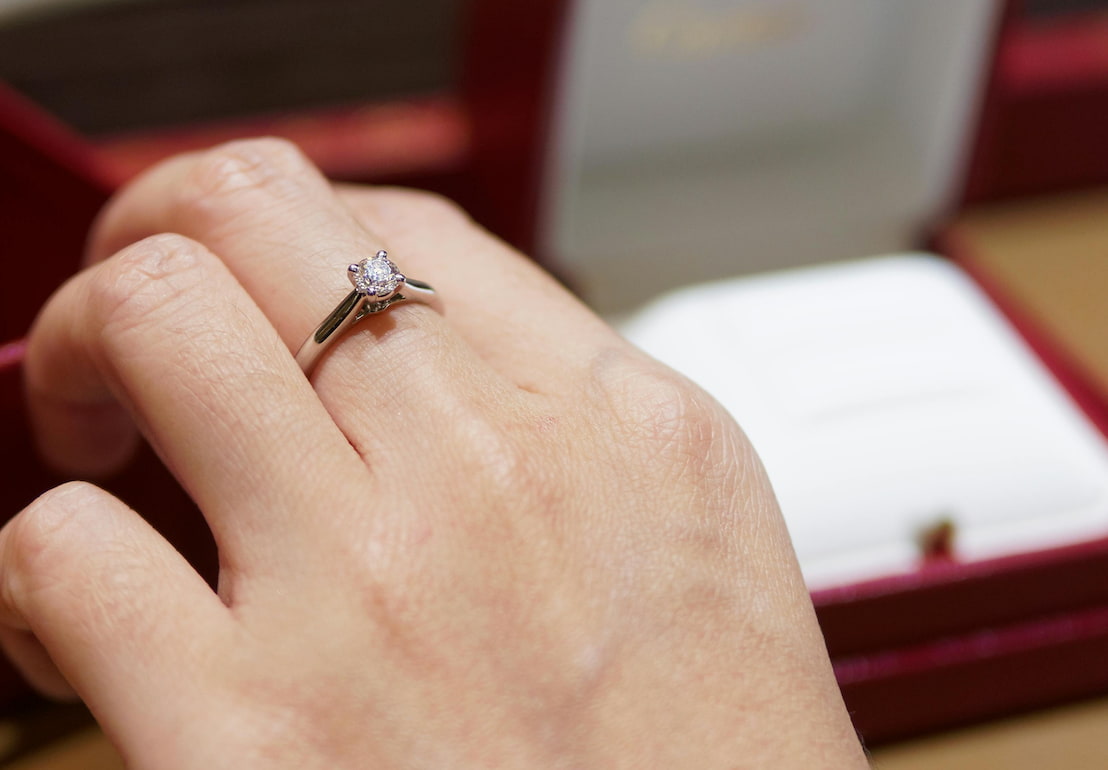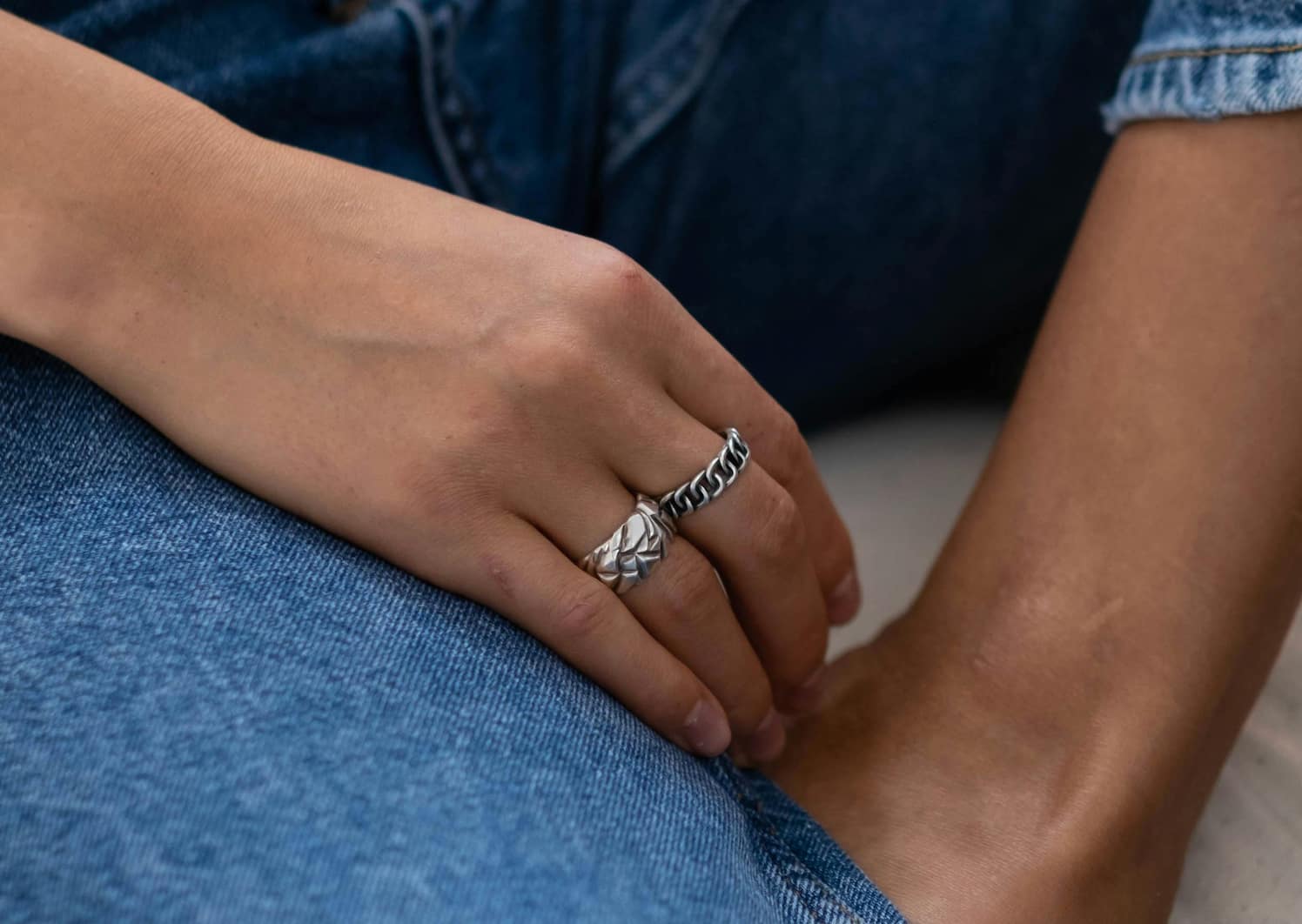Got stuck choosing between white gold vs silver jewelry? You're not alone. Both metals have that sleek, shiny white finish and a timeless appeal that works for everything from everyday wear to special occasions. But when you dig a little deeper, you'll find that white gold and silver are quite different in terms of durability, price, and overall wear.
Whether you're shopping for an engagement ring, a timeless necklace, or a stylish bracelet, understanding the differences between sterling silver vs white gold can help you make an informed decision. Let's break it down and help you figure out which one fits you best.

To put it simply, white gold is a type of gold alloy created by mixing pure gold with other metals like nickel, palladium, zinc, and copper. This blend not only gives white gold its beautiful silvery-white appearance but also makes it stronger than pure gold, which is naturally soft and prone to scratches.
Typically, white gold is made in 14K (also known as 585) and 18K (also known as 750) alloys. These numbers indicate how much gold is in the mix—14K white gold contains 58.5% pure gold, while 18K white gold contains 75% pure gold. To give it an extra shine and protect it from scratches, most white gold jewelry is coated with a layer of rhodium, a super-durable metal with a bright, reflective finish.
One of the reasons people love white gold is its versatility. It has a sleek, modern look that complements diamonds and gemstones, making it a popular choice for engagement rings and other fine jewelry. It's also less expensive than platinum while offering a similar elegant appearance. Whether you're looking for something timeless or trendy, white gold can be a fantastic option that balances beauty and durability.

Sterling silver is one of the most popular and affordable metals used in jewelry. You've probably seen its shiny, elegant finish on rings, bracelets, necklaces, and even keepsakes like picture frames or decorative pieces. But what exactly is sterling silver?
Pure silver, also known as fine silver, is 99.9% silver. While that might sound ideal, pure silver is actually too soft for everyday use—it can easily bend, scratch, or lose its shape. That's where sterling silver comes in. Sterling silver is an alloy, meaning it's a mix of 92.5% silver and 7.5% other metals, usually copper. This combination makes sterling silver much stronger and more durable while keeping its signature bright and shiny appearance.
You might recognize sterling silver by its hallmark stamp, often labeled as "925" to indicate its silver content. This durability makes it great for everyday wear, but sterling silver does have one downside: it can tarnish over time. Tarnish is a natural reaction when silver is exposed to air or moisture, causing it to darken. The good news? It's easy to clean with polishing cloths or silver cleaners, and regular care will keep your jewelry looking its best.

When it comes to deciding between sterling silver vs white gold jewelry, it's important to know how they stack up in terms of appearance, durability, cost, and maintenance. Each metal has its strengths, and the right choice depends on your lifestyle, budget, and personal style.
At first glance, white gold and sterling silver can look quite similar—they both have that bright, silvery finish. However, white gold tends to have a slightly warmer, more reflective, and polished look due to the layer of rhodium plating. Without the plating, white gold has a soft cream tone, which some people prefer.
Sterling silver, on the other hand, has a cooler, grayish-white tone and a more natural luster that can feel understated and classic. If you prefer a sleek, high-end finish, white gold might win you over. But if you love a timeless, versatile vibe, sterling silver is hard to beat.
Budget often plays a big role in golden jewelry vs silver jewelry decisions. Sterling silver is significantly more affordable than white gold, making it perfect if you're looking for a stylish piece without spending too much.
White gold, being a mix of actual gold and other premium metals, is more expensive but also holds its value better over time. The rhodium plating and sometimes palladium used in white gold also add to its price, as these elements improve its durability and brightness.
So, if you're investing in something special for a big occasion, like engagement rings or heirlooms, white gold might feel worth the splurge. But for everyday pieces or trendy styles, sterling silver is a wallet-friendly pick.
Durability is one of the key differences between white gold vs silver jewelry.
White gold is made stronger by mixing gold with other metals and is further protected by a rhodium coating. This makes it resistant to scratches, tarnishing, and bending, making it a great choice for everyday wear or jewelry that needs to last a lifetime, like wedding rings.
Sterling silver, on the other hand, is softer and more prone to scratches and tarnishing due to its high silver content. While it's still sturdy enough for daily use, it requires a bit more care to keep it in top condition.
If you want low-maintenance jewelry, white gold is a better choice. Its rhodium coating helps it stay shiny and protects it from tarnishing. However, this coating can wear off over time, so you may need to re-plate it every few years.
Sterling silver, while stunning, tarnishes more easily and requires regular cleaning to maintain its bright finish. Luckily, this can be done at home with a simple polishing cloth or silver cleaner.
So, when it comes to white gold vs silver, what's the right pick for you? If you want something super durable and elegant for those extra-special pieces, like engagement rings or wedding bands, white gold might be your go-to. However, it does come at a higher price due to its gold content and rhodium plating. Sterling silver, on the other hand, gives you a classy look at a more affordable price, but it does require more upkeep as it can tarnish or scratch more easily.
At the end of the day, it's all about what works for your style, budget, and how much maintenance you're willing to do. No matter which one you choose, you'll end up with a gorgeous piece of jewelry that suits your needs.
White gold doesn't actually turn yellow. What happens is that over time, the rhodium coating that gives it a bright white shine wears off. When this happens, the metal underneath, which has a slight yellowish tone, becomes more prominent. This can make it seem like your white gold jewelry is turning yellow, but it just needs fresh rhodium plating to restore its white color.
Yes, 10K white gold can be a better choice than sterling silver if you're looking for durability. It's an affordable white metal that's tougher, less prone to scratches, and more resistant to tarnishing. The lower gold content in 10K white gold adds strength, making it a sturdy option for jewelry that needs to handle daily wear.
Yes, you can wear white gold and silver together without any issues. Some people worry that silver's tarnish might rub off on white gold, but it won't, as gold doesn't react to silver's tarnishing. So go ahead and mix and match for that stylish look.
Wondering what is statement jewelry? Learn all about it here, explore its types, and get tips on choosing and styling bold pieces that define your unique look.
Read MoreLearn what is oxidized silver, how it wears over time, the easy way to oxidize silver yourself, and preventive tips for maintaining its unique finish.
Read MoreHow to store jewelry safely and beautifully? Discover expert tips to prevent tarnish, organize pieces, and keep your collection in top condition.
Read MoreLearn how to engrave jewelry with this beginner-friendly guide. Discover techniques, tools and steps to personalize jewelry with professional skills.
Read More